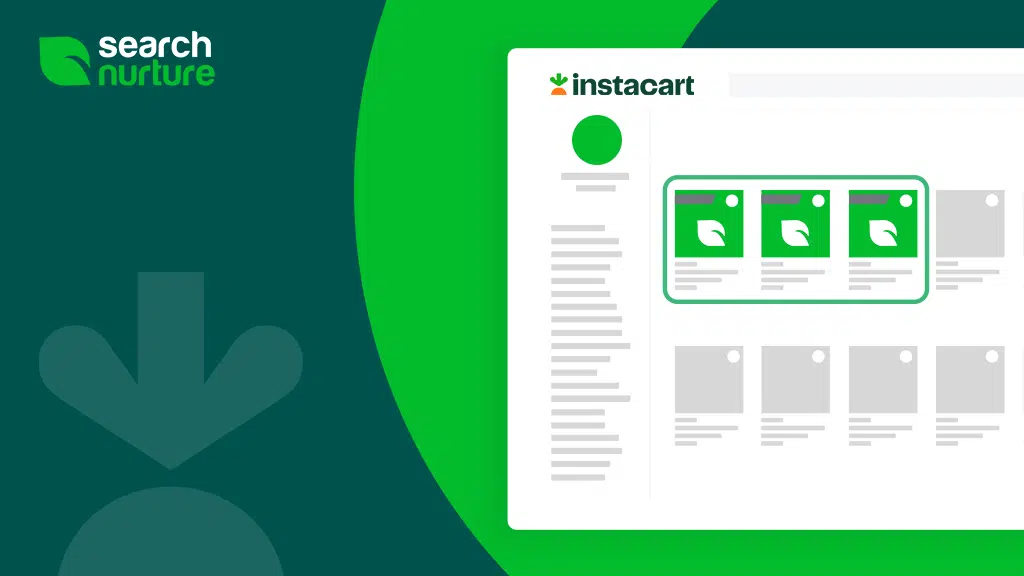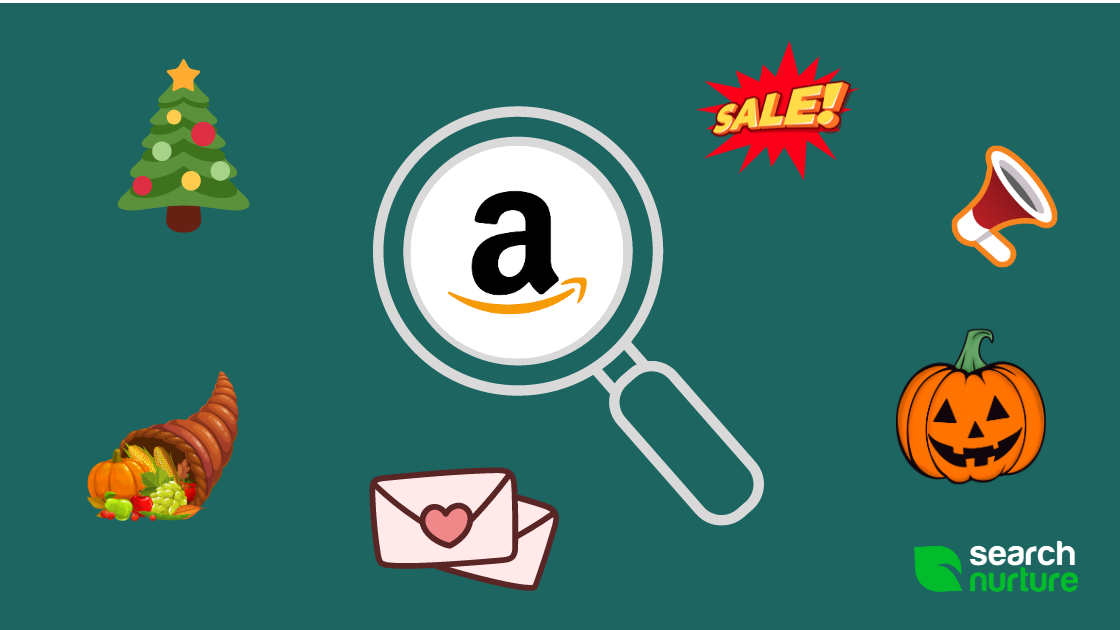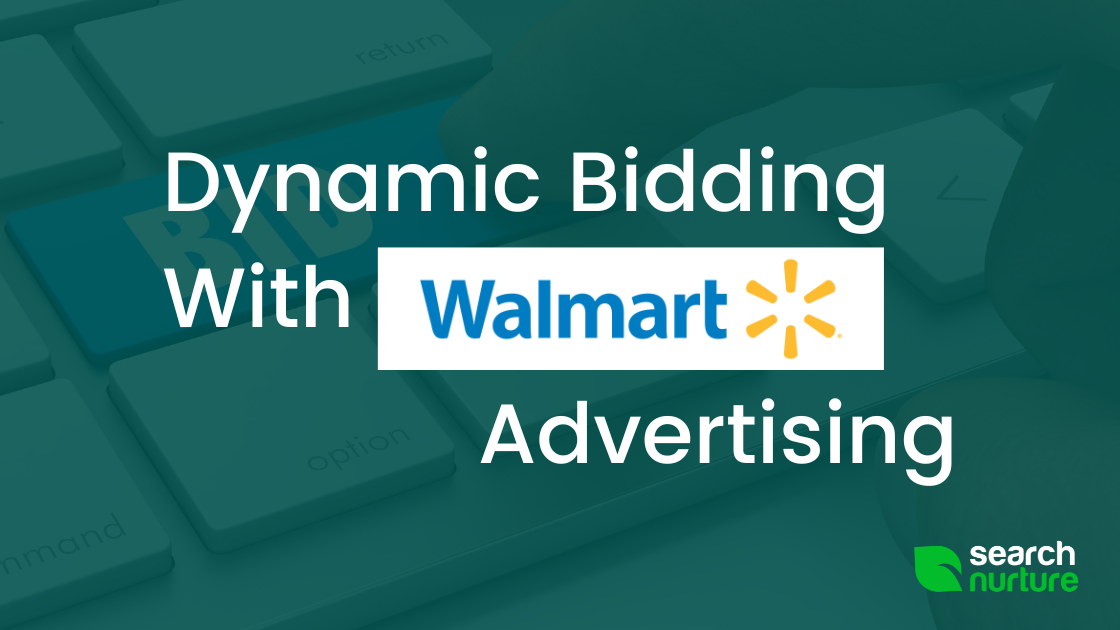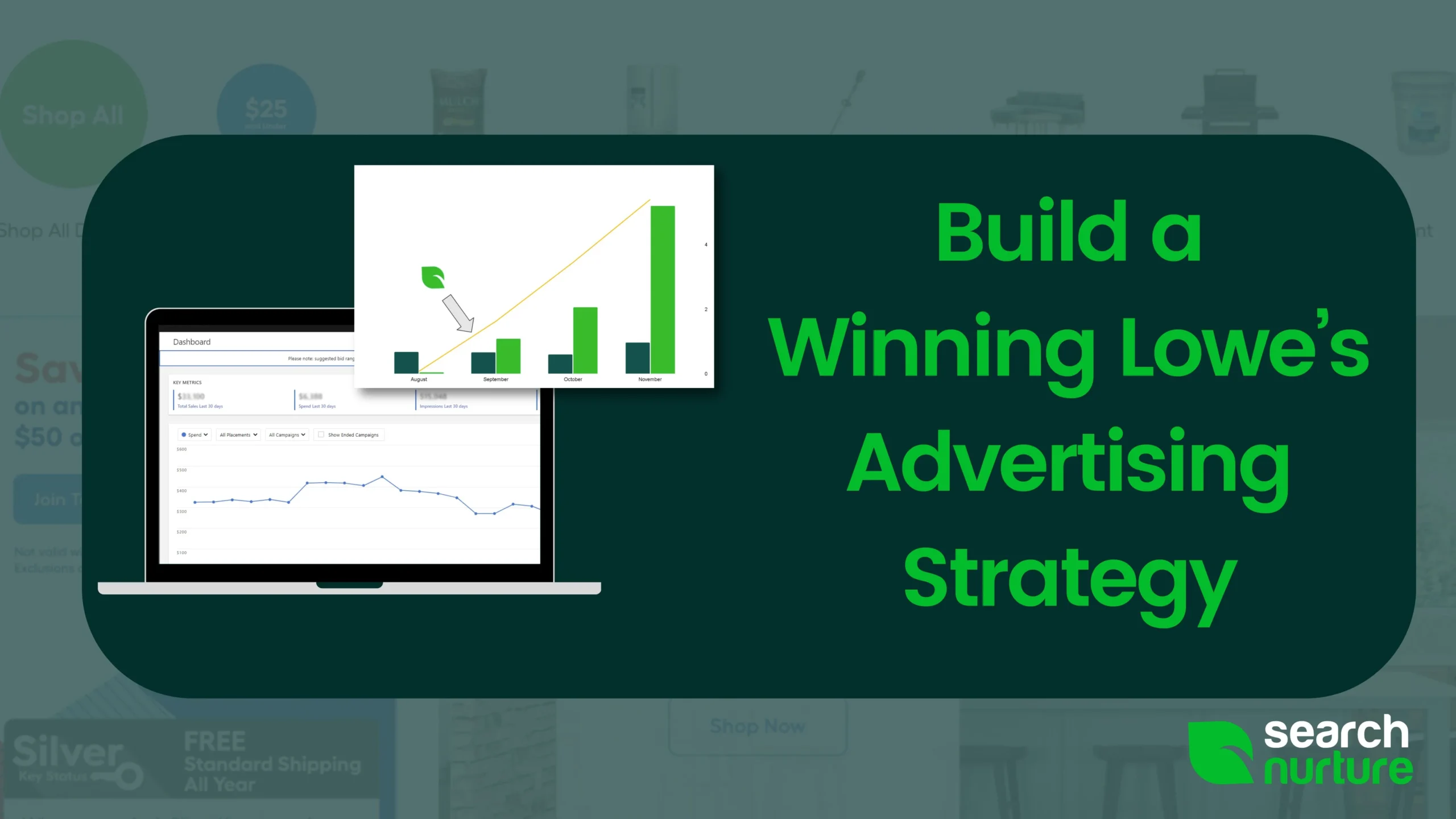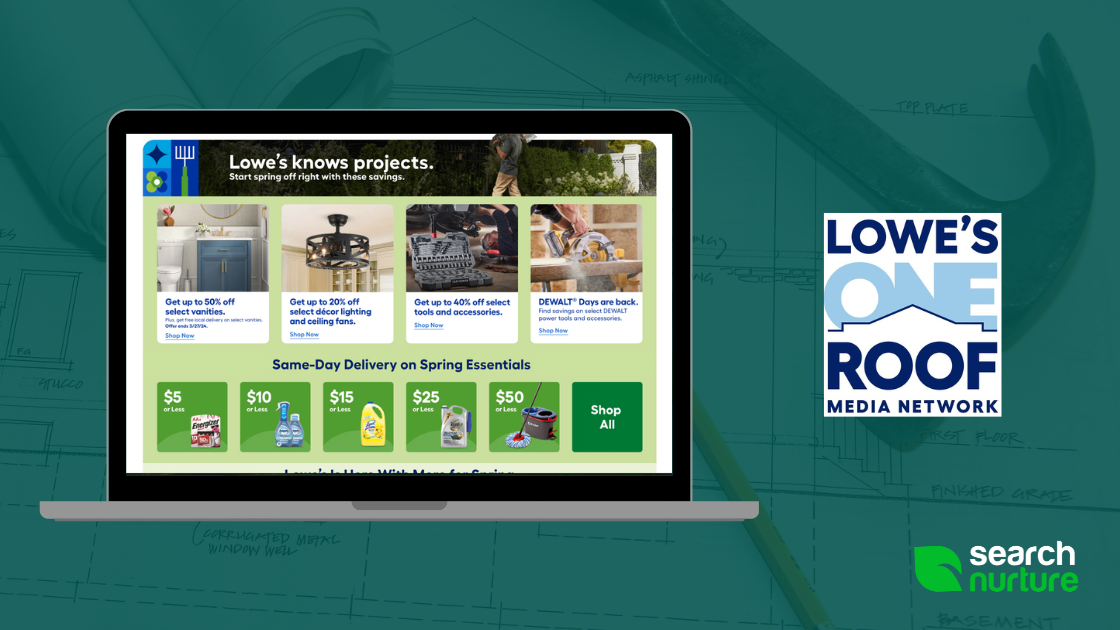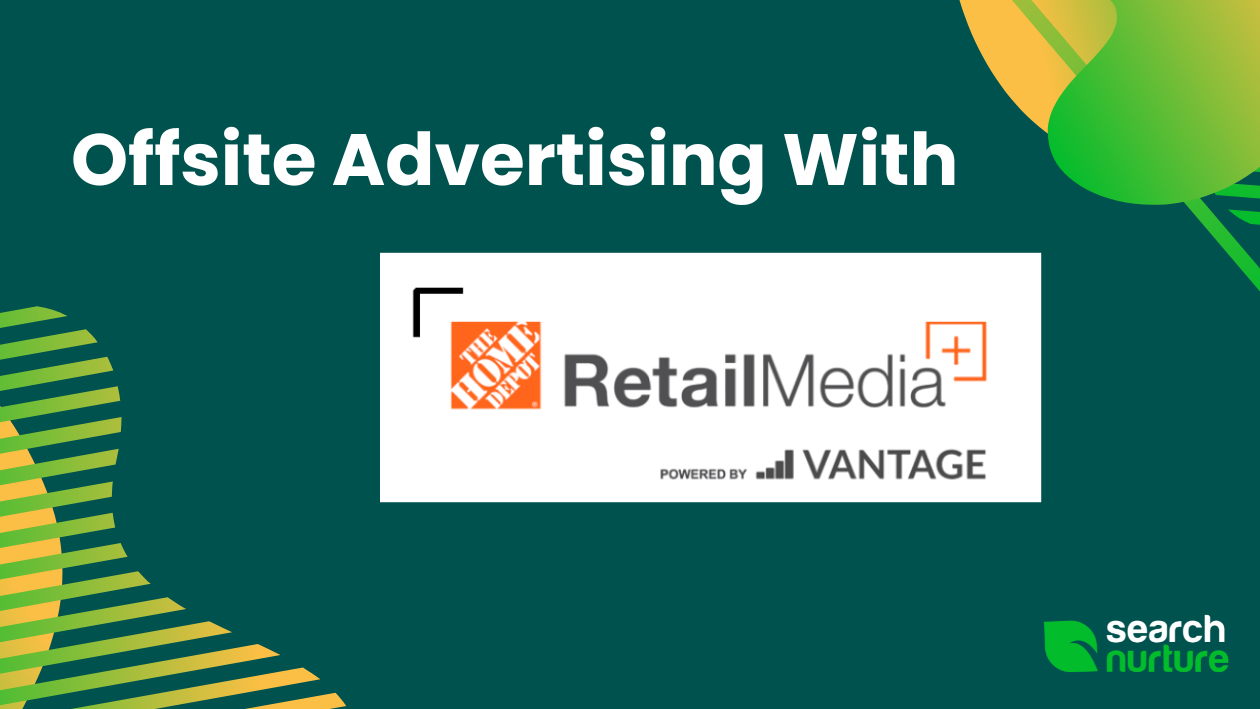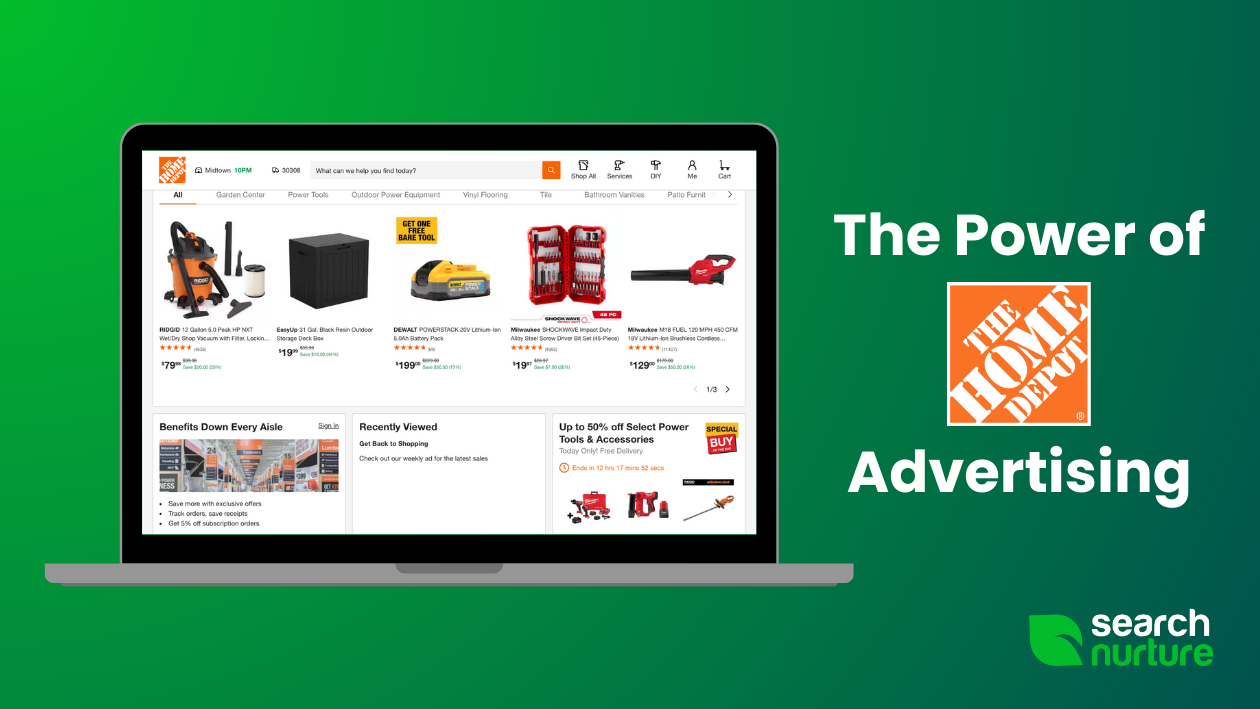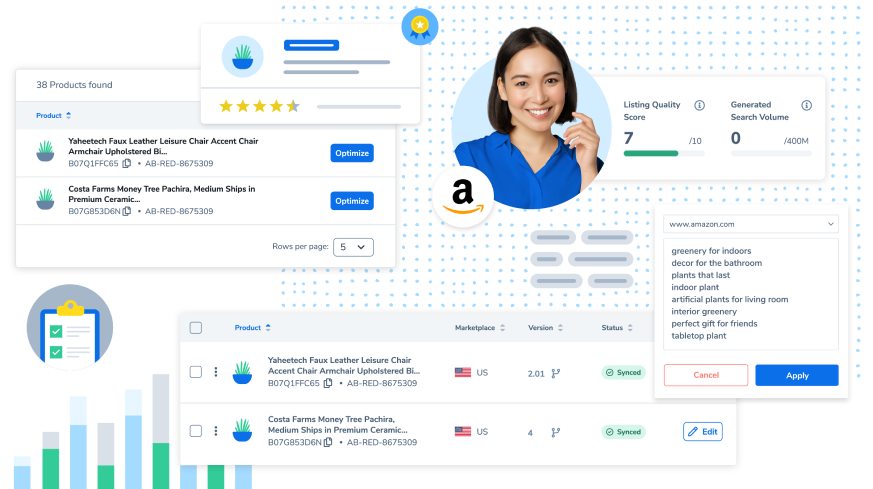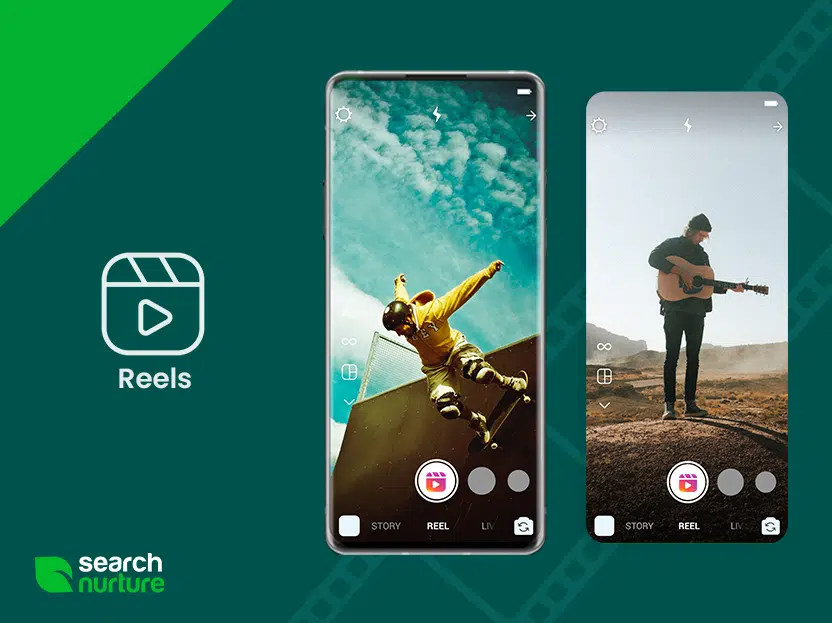During recent years, Instacart has emerged as a force of change in the eGrocery industry. For example, in 2020, Instacart generated $35 billion in sales, according to data collected by Business of Apps. In addition, Instacart’s 9.6 million active users represent a major asset for search marketers and product retailers to capitalize on increases in online grocery purchases. To remain competitive in this growing industry, retailers emphasize Instacart Sponsored Products advertising as a significant source of sales revenue.
Since Instacart alone hosted more than 50% of online grocery purchases in 2020, their advertising provides market retailers a chance to put their brand on the front lines of a changing industry.
In this guide to Instacart sponsored products, we discuss:
- Where sponsored products appear
- Campaign goals for sponsored products ads
- How to budget for Instacart advertising
- Tips to optimize ads and measure performance
For a complete guide covering more than just Sponsored Products, visit our Comprehensive Guide to Instacart Advertising.
Where Instacart Sponsored Products Appear
To optimize ads for Instacart sponsored products, retailers should consider where these ads can appear, which changes their reach.
Search: Results, Product Detail Pages
When customers search for keywords, their results display relevant sponsored products in the form of an ad banner. This banner can appear on several Instacart pages.
Search Results
Using the same principles as SEO in search marketing on Google, the most Instacart purchases come from products listed early in a customer’s search results. By purchasing a sponsored product ad, retailers can make their products more relevant in the results:
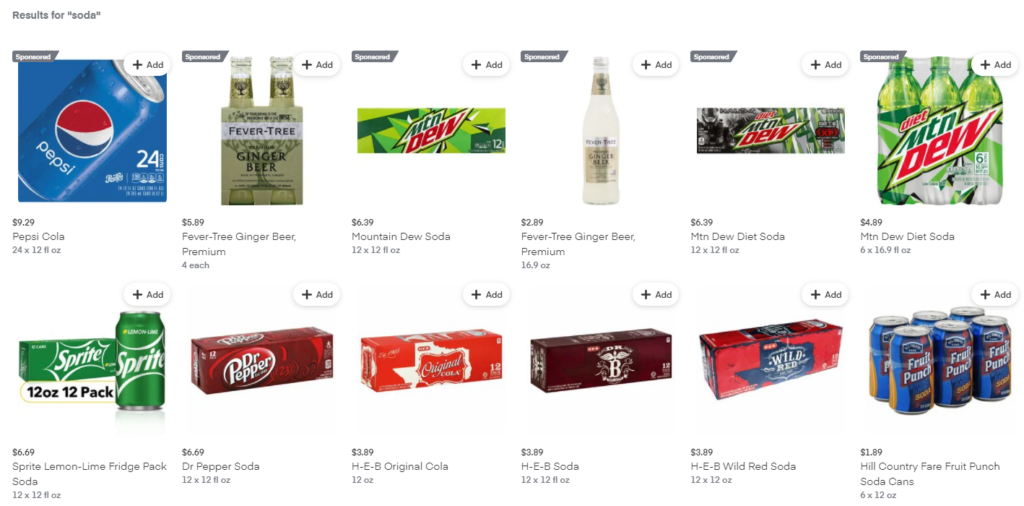
Item Detail Pages
When customers click on one of these sponsored products, they can also view additional items by scrolling down the product details pages. For example, by clicking the first result above, “Coca-Cola Soda,” customers receive additional sponsored product ads:
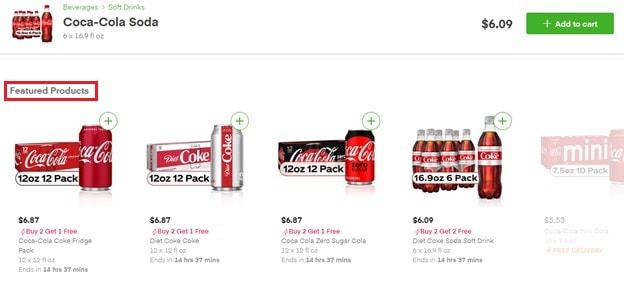
Browse: Homepage, Department Pages
Even without typing in search terms, customers can be exposed to sponsored products through landing pages for stores and departments.
Homepage
The homepage displays recommendations in the form of shopping suggestions. For example, on a customer’s account, it will look something like this:
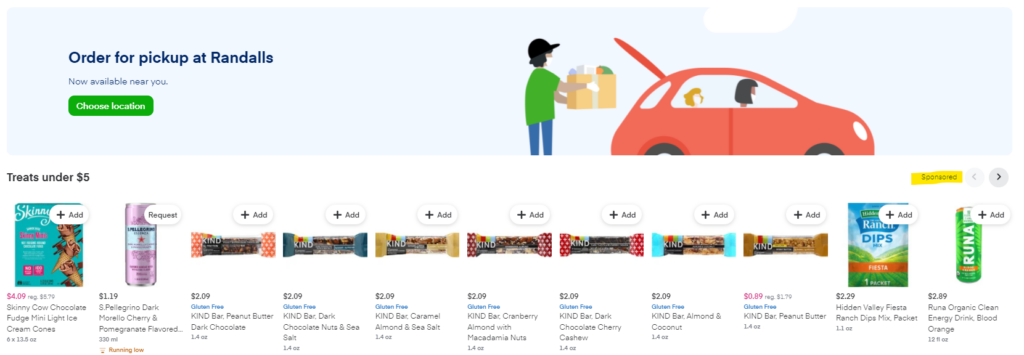
Department Pages
Customers can also click on a department such as “produce” or “dairy & eggs” to be redirected to a page full of suggestions in that department, including sponsored product ads:
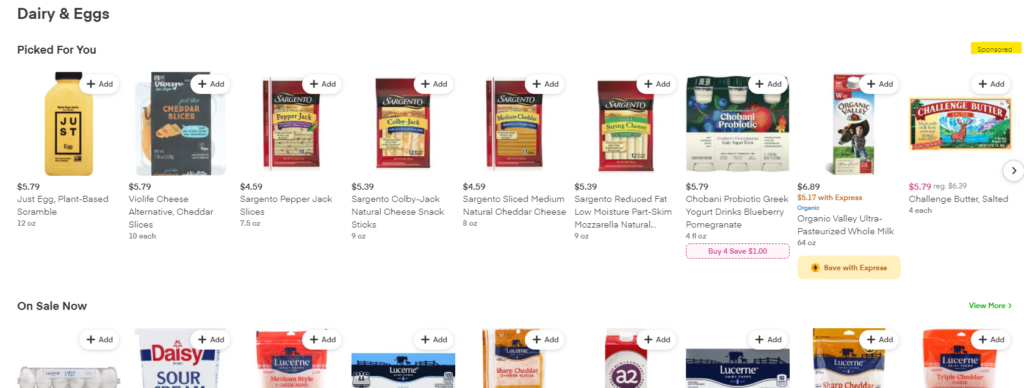
Personalized: Buy It Again, Cart Checkout Pages
Instacart encourages customers to repeat past purchases and sends them sponsored product ads based on their activity. These appear on the “Buy It Again” and “Cart Checkout” pages.
Buy It Again Pages
The “buy it again” page reminds customers of their past orders. This page saves customers time and increases brand loyalty for products they have already purchased.
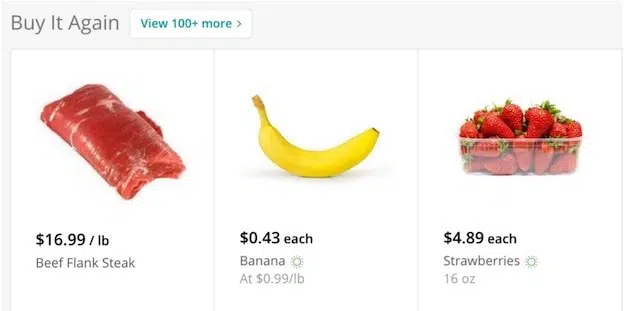
Cart Checkout Pages
Additionally, on the checkout page, sponsored product ads suggest items based on the current cart to entice customers to add them before completing the purchase:
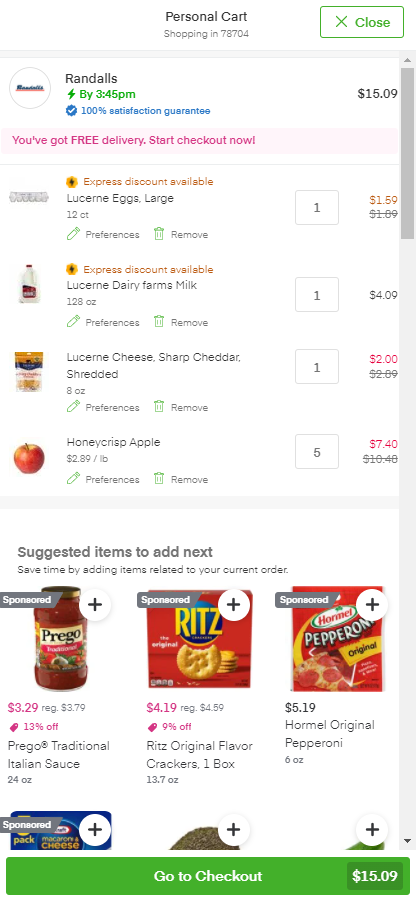
Instacart Sponsored Products Advertising Goals
Instacart provides retailers with insight into an ad’s performance. These insights help marketing teams refine their ads in terms of sales growth, returns, and visibility.
Sales Growth
Instacart measures the sales attributed to a specific ad over a fixed period. This metric is their estimate for how much an ad is worth to your business.
ROAS
ROAS compares an ad’s financial performance to your investment in it. It is often used with the CTR for each ad to measure its value.
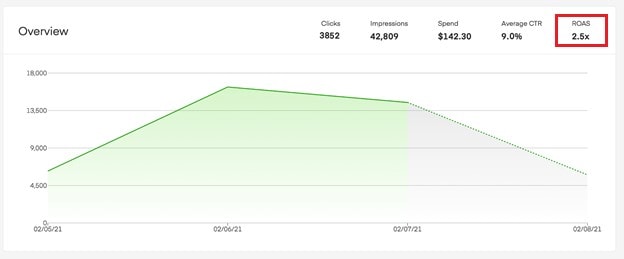
Source: Instacart
CTR
The clickthrough rate or CTR represents the percentage of ads that customers interacted with. Thus, CTR gives market retailers a sense of their ads’ engagement level. Combined with ROAS, CTR is a primary metric for measuring the financial performance of a specific ad.
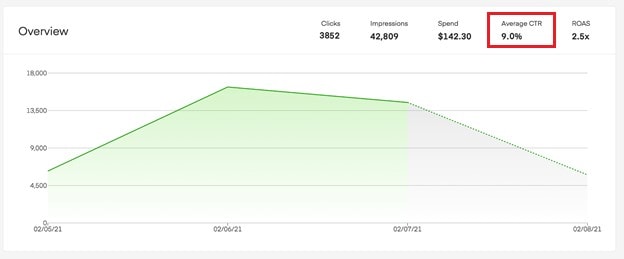
Source: Instacart
Total Category Share
A retailer’s category share compares their sales to the total market value of their product category. This percentage allows you to view your products’ impact on the market from a more global perspective. Note that this analytic is only available for Instacart Premium customers.
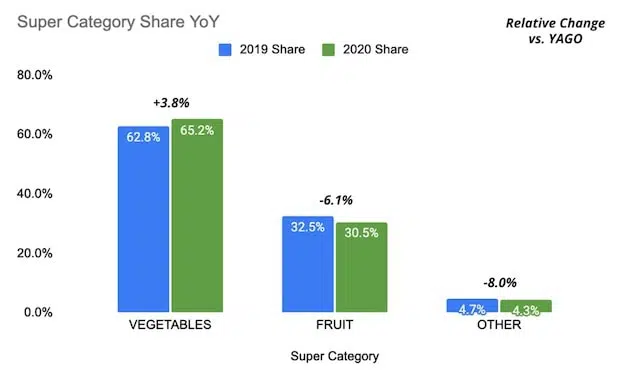
Source: Instacart
Category Visibility and Awareness
Category visibility uses impressions to measure how often your ad appeared on Instacart pages. This metric allows retailers to estimate their ad’s impact within their product category.
Instacart Sponsored Products Campaign Structure
Successful sponsored product ads on Instacart take advantage of the app’s organizational structure. They use campaign grouping and product grouping to optimize the ad budget for keywords and categories.
Campaign Grouping
Campaigns can be grouped on Instacart using a tiered structure similar to Amazon’s marketing. Budget for each campaign based on the value of its category. This will make your marketing schedule easier to optimize by allowing you to make changes for the whole campaign rather than for each ad.
Product Grouping
There are three primary ways to group products in Instacart ad campaigns: like products, similarly priced products, and individual products. Each has advantages related to how grouping affects your ability to target keywords within your campaign.
Like Products
Like products share keywords. Customers searching for related products may search for that word, such as “bread,” or a related term like “sliced bread.” Since Instacart only sends ads to exact keyword matches, you should group products by these similarities. This allows your sponsored product ads to appear in relevant search results for a customer looking for bread, regardless of the exact keywords they type.
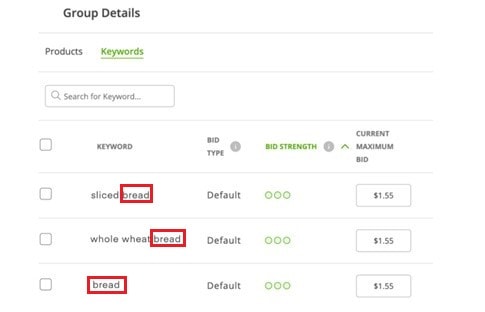
Similarly Priced Products
Products within a close price range can also be strategically grouped together. Making decisions for the group based on its value saves time. It also prevents mistakes when comparing the cost-per-click of the ad to the value of the product.
Individual Products
Products can also be grouped individually. This could be strategic if they target specific keywords that are not shared by other groups or are priced uniquely in their category.
Budgeting for Instacart Sponsored Products
Instacart offers multiple ways to create budget profiles. Paced spending and max impressions represent the two leading options retailers can use to strategize their campaign budget.
What is Paced Spending?
Paced spending sets a daily spending limit. It requires a timeframe for the ad campaign and a budget plan spaced out by spending intervals. This option prevents an advertising budget from running out before the next interval.
Max Impressions
The max impressions option releases these daily limits. It allows Instacart to maximize impressions on ads using the total allotted budget. However, this means that with no spending structure, the entire budget could be depleted in days, leaving a campaign without ads until the advertiser can replenish the budget.
Instacart Sponsored Products Keyword Optimization
Instacart tracks multiple types of keywords. Understanding the differences can help strategize a featured products ad campaign.
Default Keywords
When customers type in a search term, Instacart applies your bids on default keywords to display your sponsored product ads. For instance, a default bid on keywords in a product category such as “sliced bread” or “whole milk” means that Instacart will display a sponsored product when this term is searched. They will then charge you the default bid when customers click on the ad.
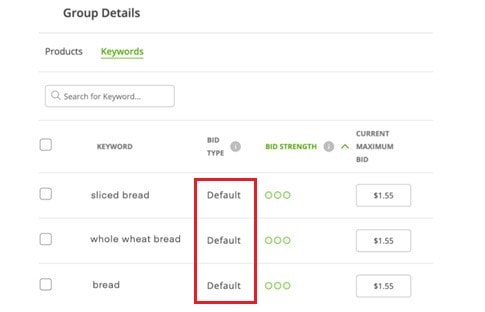
Keyword Overrides
Keywords overrides manually optimize keywords based on their value to specific ad groups. By targeting searches using groups of related words, overrides can optimize the value of a marketing budget by comparing it to the CPC of ads in that category.
Keyword overrides should be used for the keywords that matter most to a retailer’s ROI. These bids tend to be higher, as well as more specific. On Instacart’s performance dashboard, keyword performance, including their suggested maximum bid and your current override for each word, will look like this:
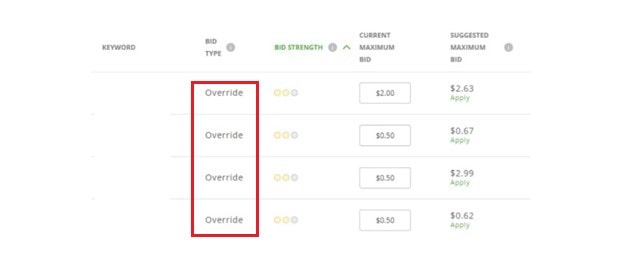
Source: SearchEngineJournal
Category Keywords
In addition to separating keywords by bids, larger categories like “milk” and bread” offer retailers opportunities to bid on broad groups of keywords.

Branded Keywords
Branded keywords allow retailers to use customer loyalty to their advantage. For example, they can bid on their own brands to place sponsored product ads in specific search results.
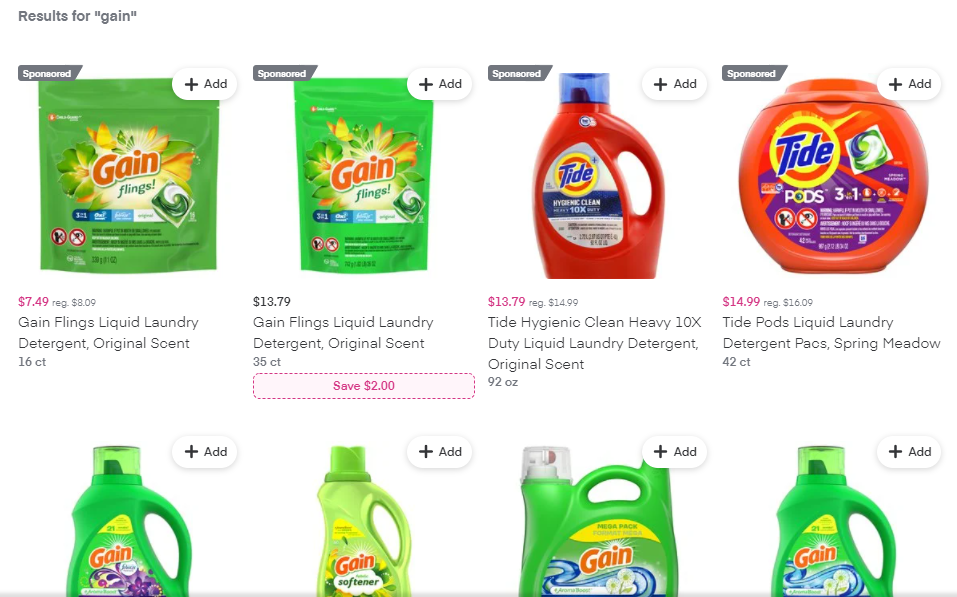
Competitor Keywords
Brands can bid on a competitor’s keywords as well. This strategy can steal a competing brand’s ad space by taking advantage of its brand recognition. For example, consider search results for “clif bar,” a popular brand of healthy snacks. The relatively unknown brand “Luna,” rather than bid on its own brand name, bid on the keywords “clif bar” to appear in these results:
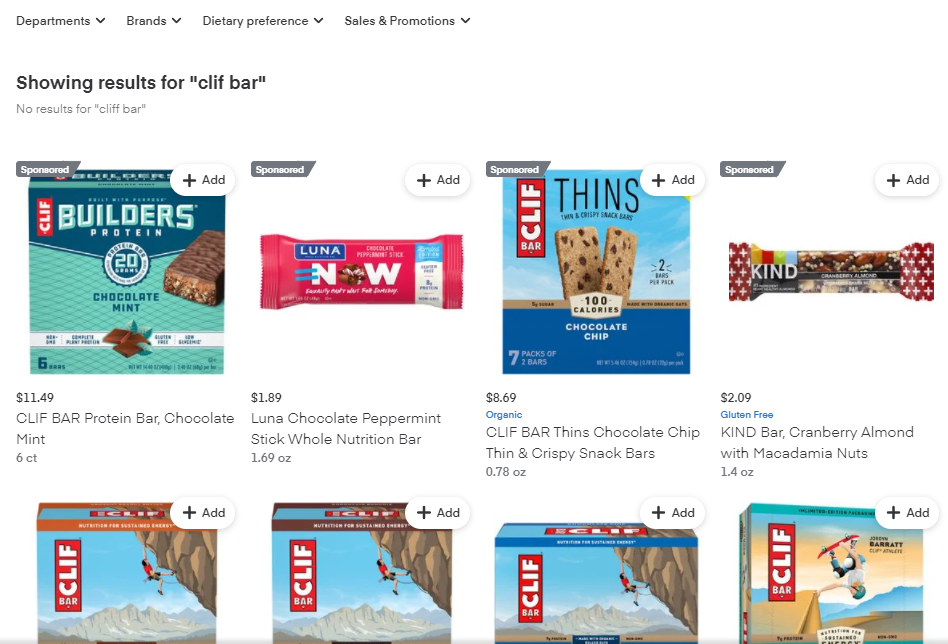
The cost-per-click of bidding on a competitor’s keywords tends to run high. However, it can be advantageous for lesser-known brands.
Measuring Performance with Instacart Sponsored Products
Retailers measure their ad performance differently. By emphasizing different KPIs, they may optimize their keyword strategies for their specific goals.
Instacart features a unique, real-time keyword rating system that helps businesses elaborate on their KPIs by evaluating each keyword separately. It works on a color-coding system where each color represents the probability that your current bids will win placements on your bidding words.
Green – These keywords have a high probability of winning at least 50% of ad placements at your current bid.
Yellow – This tier indicates a 25% probability of winning.
Red – Keywords listed as red show a nonexistent probability of any ads placing compared to your competitors.
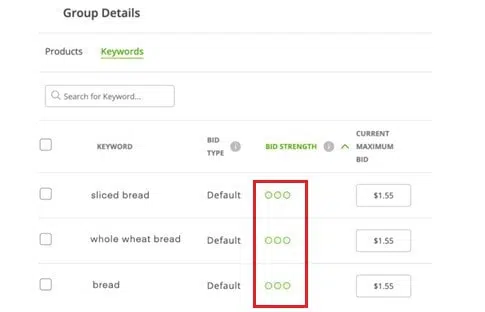
Using these estimates of the percentage of winnable placements at the current bid in each product category, retailers can adjust their sales targets and budgets accordingly.
On Instacart, a winning bid is not always the most expensive maximum amount. Instead, it is the most optimized bid based on this competitive keyword metric compared to your competitors’ spending in your ad category.
Getting Started with Instacart Sponsored Products
With Instacart leading the way in grocery delivery services, now is the ideal time to establish visibility for your products and brand on this growing platform. If you’d like to learn more about Instacart Advertising, feel free to reach out directly, or check out one of our many guides related to Instacart Advertising.

Article by


